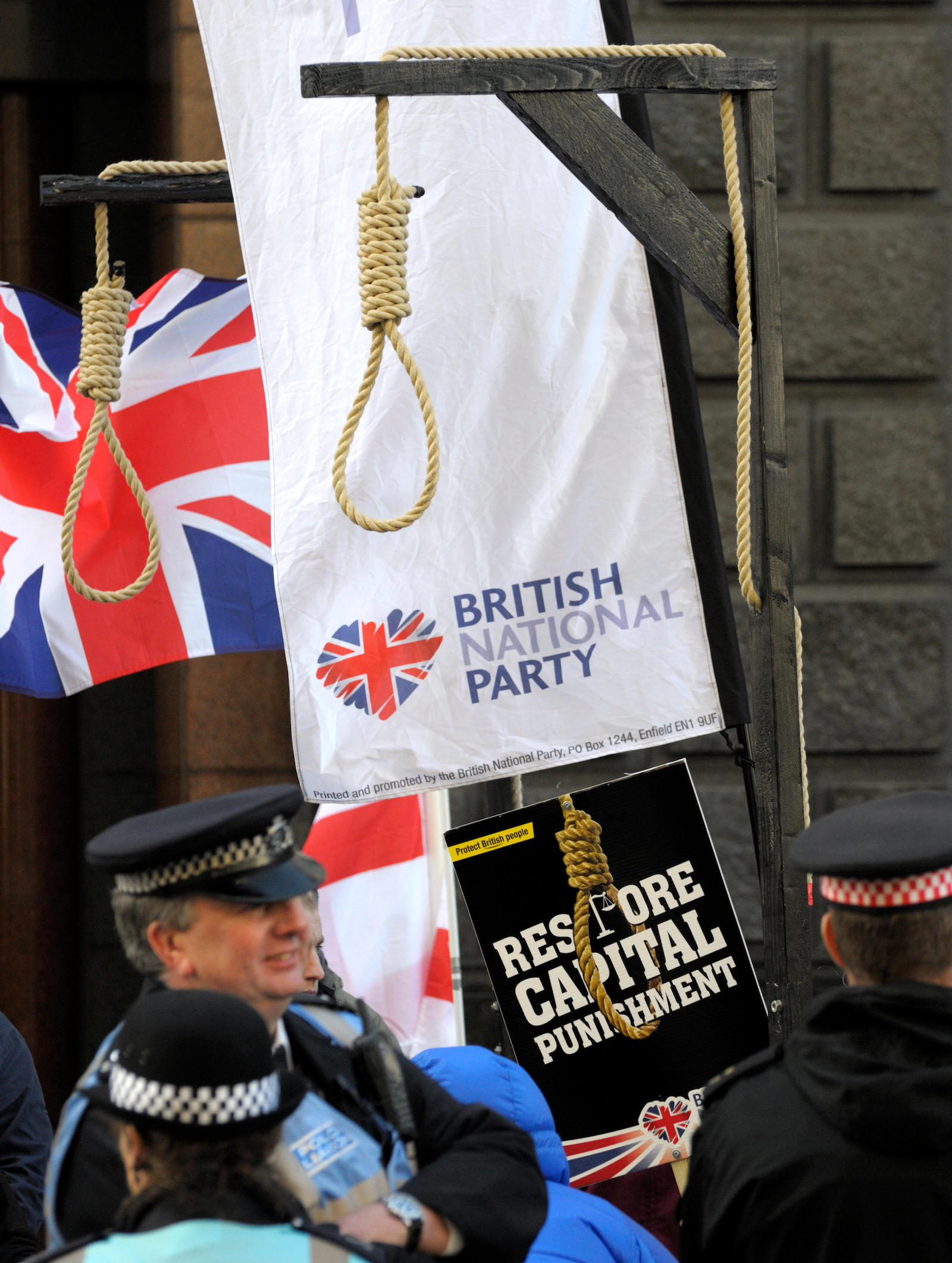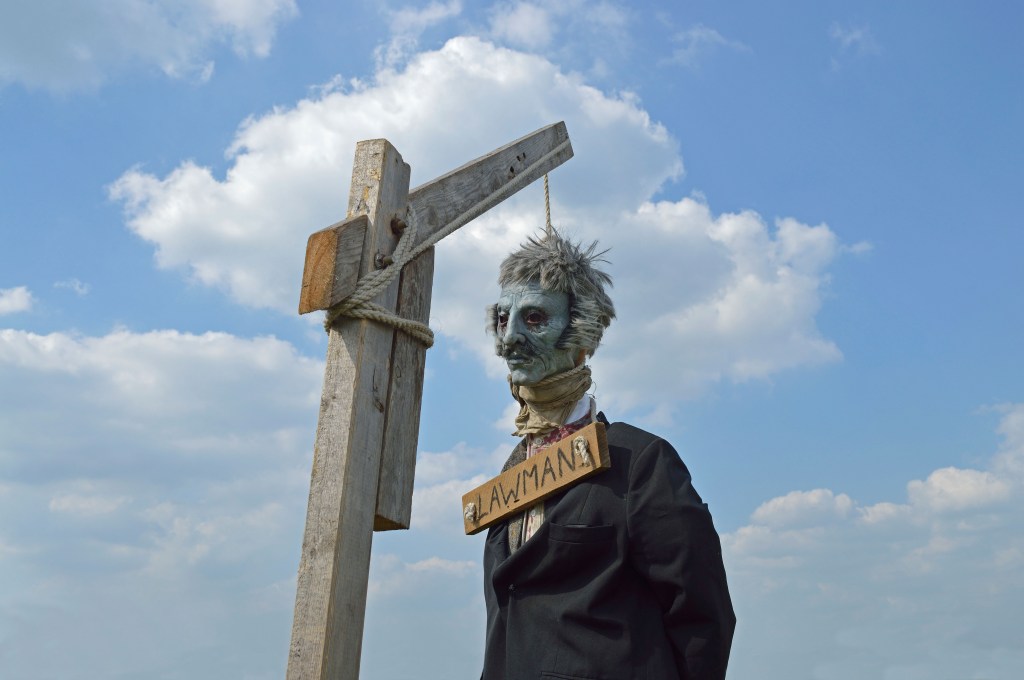To understand the outrage among the compassionately-minded in the wake of UK Home Secretary Sajid Javid’s recent correspondence with the US Attorney General is to understand the long, bloody path which led to the abolition of capital punishment in the UK.
Reports say Javid’s letter stated that the UK government “will not seek assurances over the use of the death penalty” against two former British citizens – 34-year-old Alexanda Kotey and 30-year-old El Shafee Elsheikh. Both are accused of being ISIS jihadists. Both currently await trial in the US.
Videos by VICE
The UK’s battle for abolition of the death penalty was long and hard fought. Polls indicate that the majority are proud that this country is one of 106 worldwide to consider capital punishment inappropriate – but this wasn’t always the case. The British legal reformer Sir Samuel Romilly – who, in 1814, was responsible for bringing an end to hanging, drawing and quartering – had stood in front of the House of Commons four years prior, telling the room that there was “no country on the face of the earth in which there have been so many different offences according to law to be punished with death as in England”. He had a point.
Look to the past and you’ll find a landmass stained with blood. Names like Alice Glaston – who, at 11, is thought to be the youngest girl legally executed in Britain, killed by the state on the 13th of April, 1546 for a crime lost to history – are deeply unsettling to consider. Yet it’s the period between the 17th and 19th century, known retroactively as “The Bloody Code”, which casts the biggest stain on the UK’s capital punishment copybook.
In 1688 there were 50 offences punishable by death. By 1776, that number had quadrupled. By the end of the century the number had reached 220. Crimes punishable by death included “strong evidence of malice in child aged 7-14 years of age” and “being in the company of gypsies for one month”, but the majority concerned the protection of property, of which there had been a boom during the first half of the 18th century. This – the notion of capital punishment being used for the purposes of class suppression – is a theme that runs parallel to the history of the death penalty, in the UK and elsewhere.
It’s thanks to the Labour MP Sydney Silverman that the abolition of capital punishment in the UK was finally agreed. Silverman had founded the National Campaign for the Abolition of Capital Punishment in 1925, and had written extensively about a variety of miscarriages of justice in the 1940s and 50s. Most significant was the hanging of the Welshman Timothy Evans on the 9th of March, 1950. Evans had been sentenced to death for the murder of his wife and baby daughter. During the trial, Evans had accused his downstairs neighbour John Christie of being responsible for the murders. His neighbour responded with perjured evidence. Three years after Evans was hung, Christie was revealed to be a serial killer. He’d murdered six other women in the same house, including his wife. Evans received a posthumous pardon in 1966.
This – along with the executions of Derek Bentley (executed in 1953, posthumous pardon in 1993, quashing of murder conviction in 1998) and the contentious case of Ruth Ellis, the last woman to be hanged in the UK, on the 13th of July, 1955 – were pivotal in changing the UK’s attitudes to capital punishment.

At the time of Ellis’s execution, the British Pathé newsreel openly questioned whether capital punishment, of anyone, female or male, had a place in the 20th century. At this time, the Observer newspaper wrote of the collateral damage caused by capital punishment: “[People should] consider the task of explaining to the late Mrs Ruth Ellis’s 11-year-old son, now at a boarding school, what has happened. This boy, who is also fatherless, has had something done to him that is so brutal it is difficult to imagine. It is we who have done it.” Andy Ellis, Ruth Ellis’s son, took his own life in 1982.
Sydney Silverman finally got murder being punishable by death abolished in 1964, via a free vote in the House of Commons by 200 votes to 98. But like any emotive subject, it continued to be a contentious issue. Patrick Downey, the uncle of Moor murders victim Lesley Anne Downey, stood against Silverman in the Nelson and Colne constituency in the 1966 General Election, on an exclusively pro-hanging platform. He didn’t win, but with nearly 14 percent of the vote it was the largest for an independent candidate since 1945. Unsurprisingly for a country with conservatism in its DNA, large support for the death penalty has never gone away.
In August of 2011, the blogger Paul Staines, also known as Guido Fawkes, launched an e-petition on the Downing Street website calling for the restoration of the death penalty in the cases of child murder and for the killing of police. Scan the hell-scape of Change.org and you’ll find a variety of similar crusades. Guido’s petition only received 26,351 signatures in support; a counter-petition received 33,455. But that’s still 26,351 who may well have sent the innocent Guildford Four, Stephen Downing, Barry George and the Birmingham Six to the gallows.
In times when hard-right ideas gain traction in the UK’s political landscape, capital punishment is always a popular ticket to campaign on. It is, then, the climate in which Sajid Javid’s unprecedented communication exists that has worried so many when it comes to considering the reintroduction of this kind of barbarism. It’s a battle many of us thought we had won, and one with an ever-perilous line of defence.
More
From VICE
-

Photo: CHRISsadowski / Getty Images -

Photo: Adrienne Bresnahan / Getty Images -

Photo: maiteali / Getty Images

